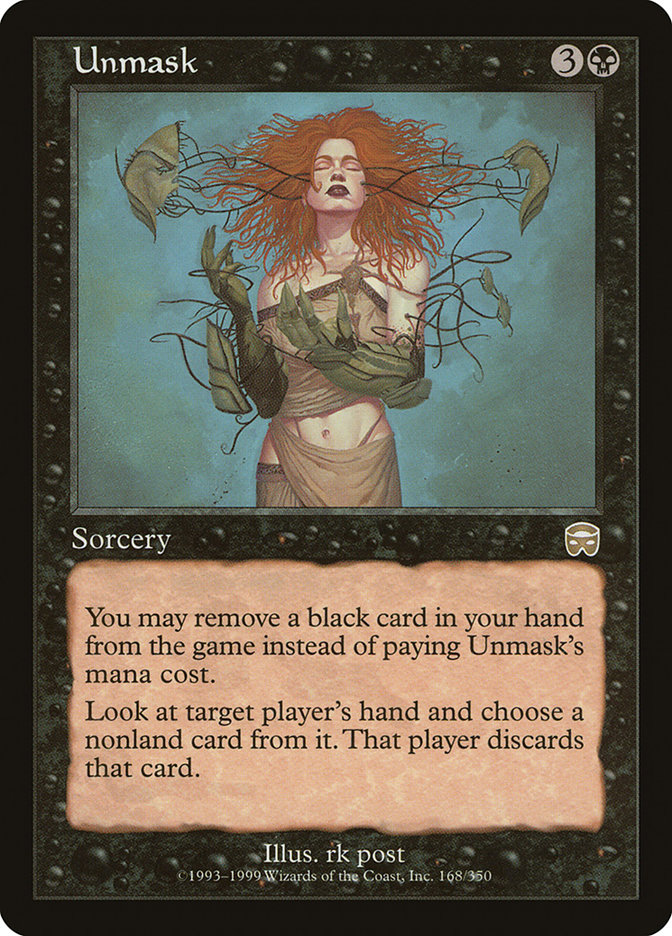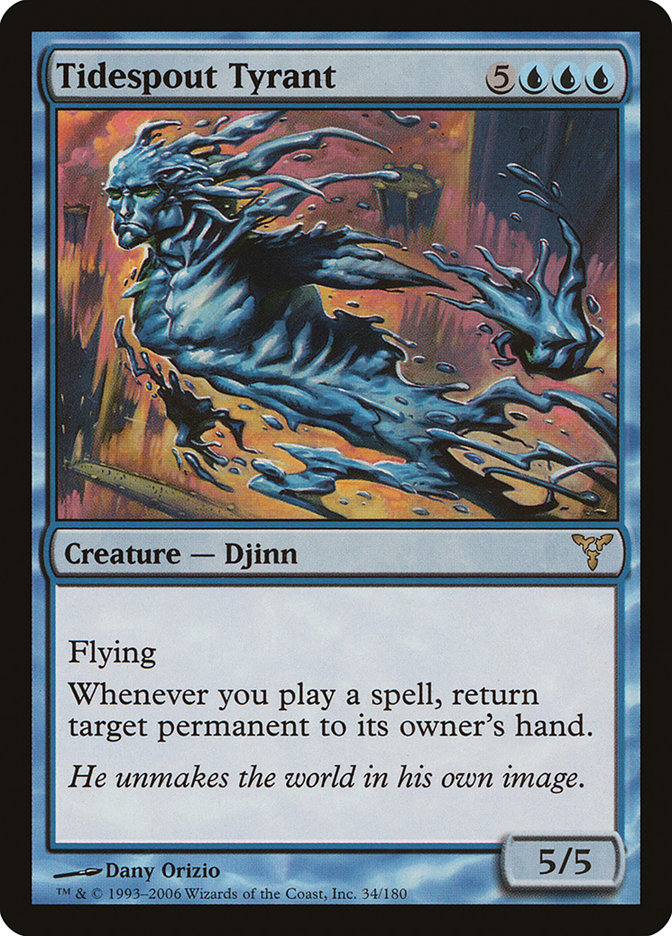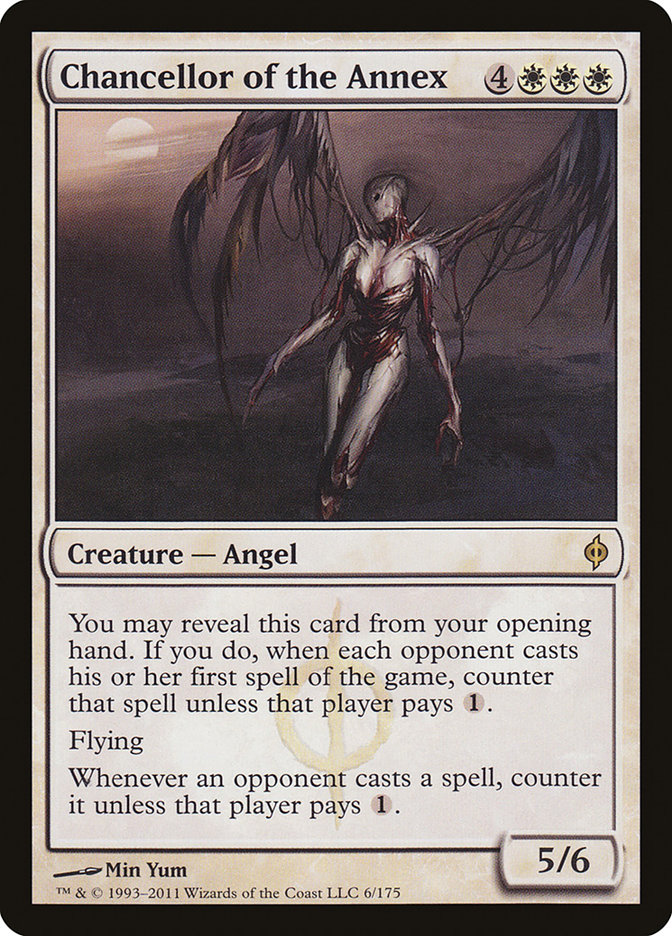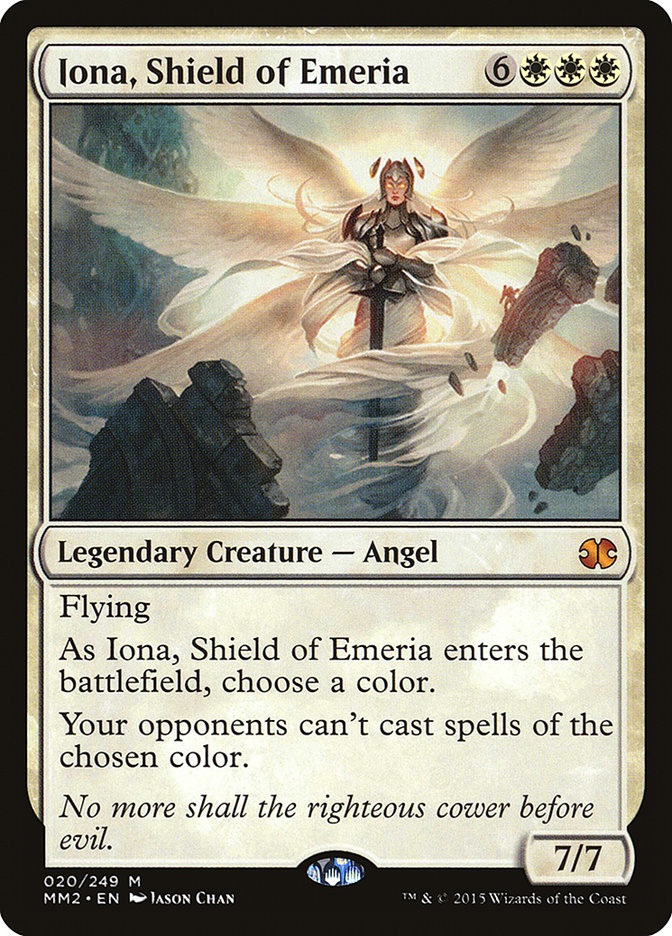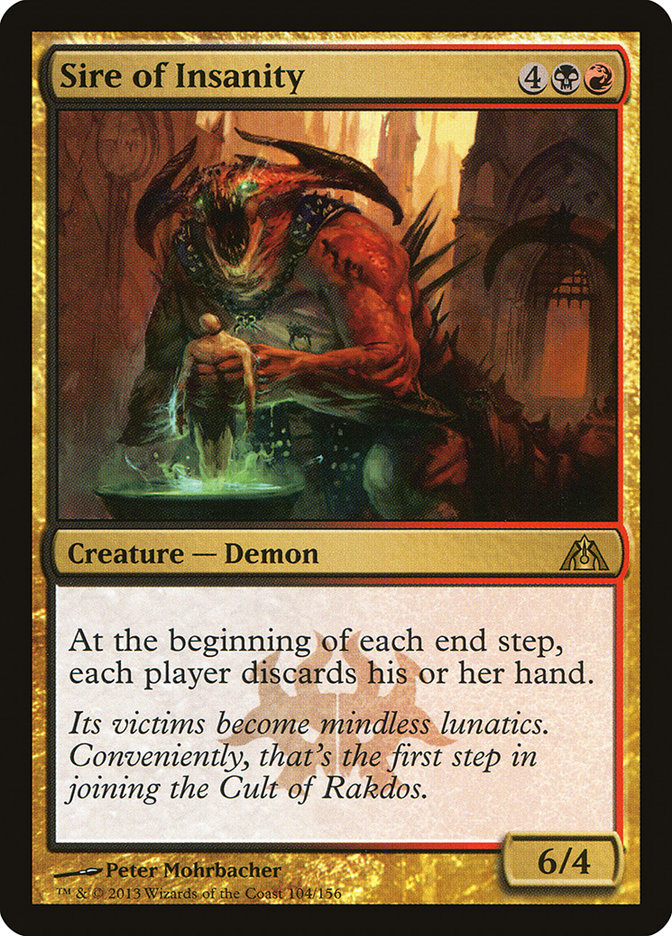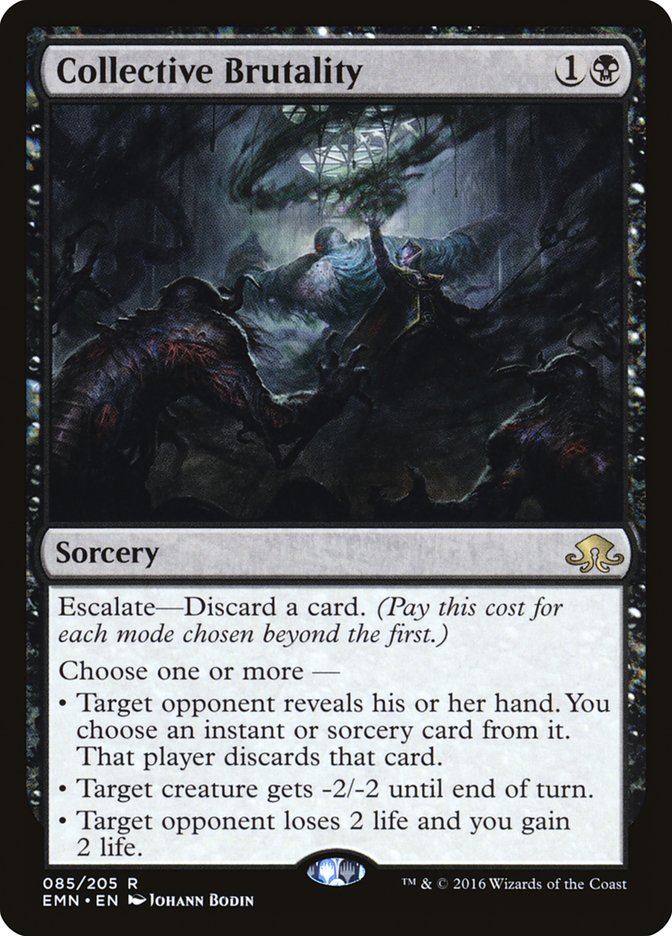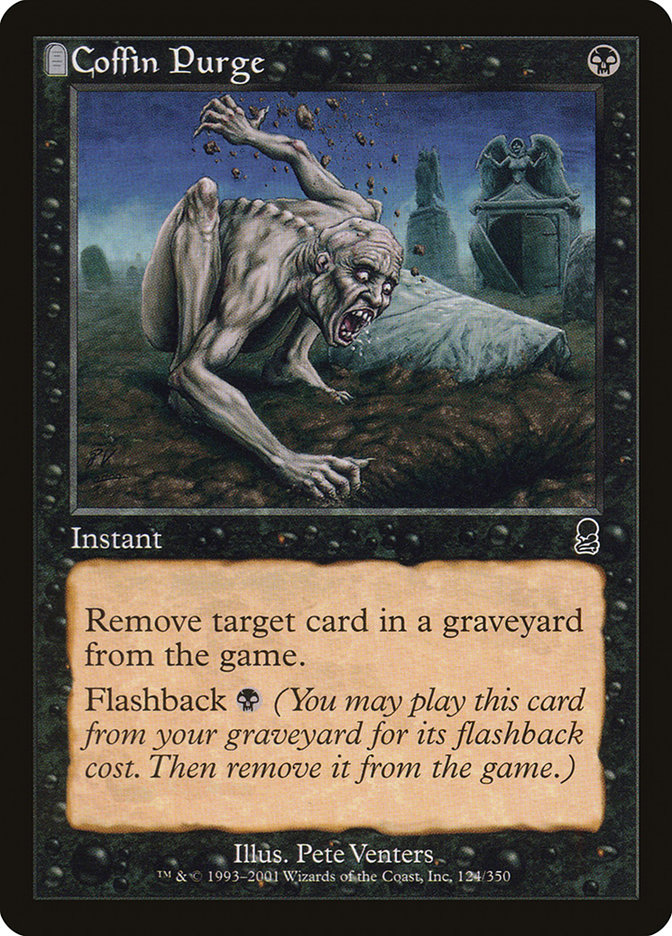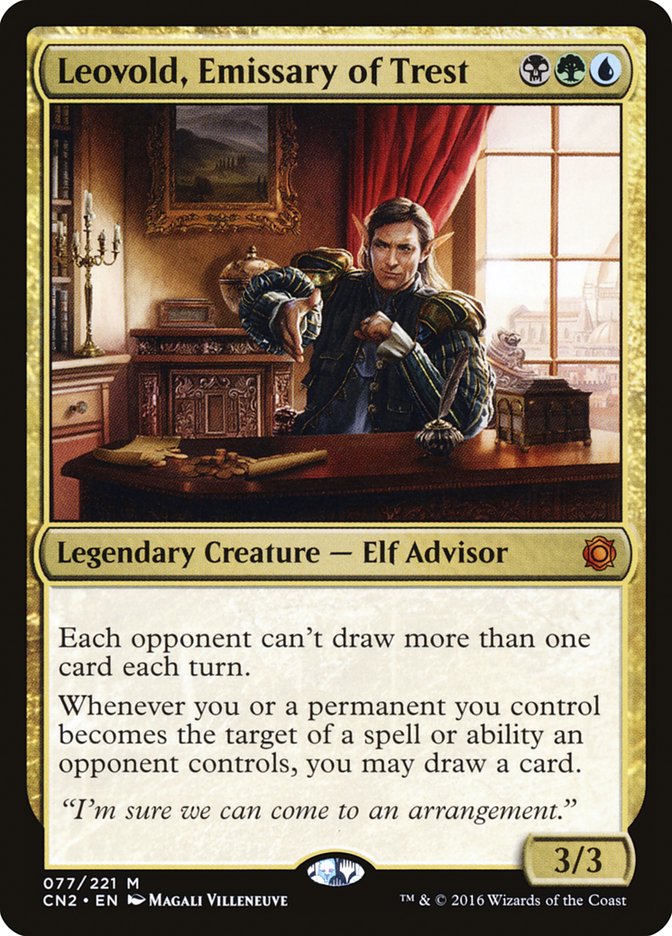Grand Prix Las Vegas was quite the experience. Never before have I had a chance to play two (or three!) Grand Prix on the same weekend. And honestly, by the third day, I was done. Too many nights in a row of sleeping on a deflated air mattress. Too many early mornings with little to no sleep. Too many turns, games, and matches of Magic for me to handle. For some, it was a wonderful experience. And for me, it was a lot of fun to hang out with some friends I hadn’t seen in a while, but I’m starting to get older and this stuff really takes a toll on me both physically and mentally.
With that said, the only thing I would change would be the deck I played in Modern. Hilariously enough, I saw Mani Davoudi sleeving up his deck right before the player meeting and jokingly offered to switch decks with him. He jokingly agreed, but we thought better of it and laughed it off. After hearing so many Death’s Shadow pilots lament the inability to deal with Etched Champion and seeing quite a few Galvanic Blast versions doing well on Magic Online, a part of me wanted in. Unfortunately, I didn’t pull the trigger, but Mani ended up taking down the tournament.
Creatures (26)
- 4 Arcbound Ravager
- 4 Ornithopter
- 2 Master of Etherium
- 4 Steel Overseer
- 2 Memnite
- 2 Etched Champion
- 4 Signal Pest
- 4 Vault Skirge
Lands (17)
Spells (17)

I don’t know why, but I haven’t been putting up nearly the same results as some of my peers with Death’s Shadow. I don’t know if I am worse than them at Modern, worse with Death’s Shadow, or just getting very unlucky, but I think it is probably some combination of all three. Whatever the reason may be, I think I’m done playing Death’s Shadow for the time being. I’d rather focus on where my strengths lie in the format and/or try to attack it from a different angle for the SCG Season One Invitational next weekend. I’m not getting the job done with Death’s Shadow, so it’s time for me to move on.
I didn’t write an article last week, as I was preparing for my trip to Las Vegas, and I wasn’t sure what I could write about other than the Aetherworks Marvel ban. So instead, today I’ll be writing about my experience in Legacy with B/R Reanimator, as I still haven’t had time to play Standard since the banning was announced. Next week, in preparation for the Invitational, I’ll likely go over both Standard and Modern, and what two decks I’ll be bringing to the table.
For now, Legacy is still fresh on my mind, and after putting up a 12-3 finish with B/R Reanimator and getting a lot of chatter on social media asking about the deck, I thought it the right time to give you a little more information about the archetype. I know there aren’t a lot of big Legacy events coming up in the near future, but I also know that those of you who are Legacy fanatics are always itching for some Legacy content.
Creatures (10)
Lands (13)
Spells (37)

The strength of this deck lies in its sheer speed. I haven’t played a more consistent Turn 1 combo deck in Legacy before, and since I refuse to touch Goblin Charbelcher, I don’t think I ever will. While some of your draws can and will fall apart in the face of disruption and hate, you have the tools to dismantle people even through the harshest disruption. Let’s start with the basics.
Your goal, above all else, is to put something big onto the battlefield as quickly as possible. Now, “as quickly as possible” doesn’t always mean on the first turn, and it doesn’t always mean on the second turn either. Sometimes, once you know what your opponent has in hand, it is a good idea to wait a turn or two so you can play around Daze or try to draw a discard spell to strip them of their Force of Will. At other times, your plan should be to jam your combo and hope they don’t have an answer. It almost always depends on the matchup, the situation, and how your opening hand looks.
On multiple occasions, I just went for Unmask on myeslf, discarding Griselbrand, and casting Reanimate. Maybe it would work, maybe it wouldn’t, but playing it safe is for other strategies.
You’re playing B/R Reanimator because you’re trying to be faster than your opponent. If you play it safe and play around Force of Will or post-sideboard Surgical Extraction, you’ll often give them a window to sculpt their hand with Brainstorm, which in turn makes it harder and harder for you to resolve much of anything.
Your deck is packed with some serious disruption on top of your speed. Thoughtseize and Unmask both work well as discard enablers for you in a pinch, but they can strip your opponent of their one or two ways to interact with you. And, if you’re playing against another combo deck, you can slow down your opponent while you try to draw into your other combo pieces. After all, putting a Tidespout Tyrant onto the battlefield isn’t all that good against decks like Storm.
Unmask works nicely with Griselbrand in that you can draw a ton of cards and then strip your opponent of their best cards. This works much the same as older versions of Reanimator that used Force of Will, except that Unmask can be aggressively used to assemble your own combo. On top of that, you have plenty of baggage cards in black that you don’t mind pitching to Unmask, where Force of Will almost always caused you to pitch some fairly important card.
One boon for B/R Reanimator comes in the form of Chancellor of the Annex. Not only does this card do some serious work once it hits the battlefield, but the “reveal” mechanic at the beginning of the game causes some serious headaches for most opponents. If you’re on the play, it can even save you from a Force of Will. In fact, whenever I had Chancellor of the Annex in my opening hand, I would always go for the turn 1 creature. Even if they have two copies of Force of Will, they’re still wasting most of their resources just to interact with you.
While Chancellor of the Annex isn’t exactly Griselbrand or Iona, Shield of Emeria in terms of raw power once it hits the battlefield, I have been so incredibly happy to have one in my opening hand that I think it deserves honorable mention. While I did lose a few games after putting it onto the battlefield in the early turns, I also won quite a few games purely on the “reveal” mechanic. Against other combo decks, slowing down or countering their first spell is huge. And, if your opponent has a first-turn Deathrite Shaman, slowing it down by one turn can make all the difference.
Iona, Shield of Emeria might not be a good maindeck card. A lot of people choose to play Sire of Insanity instead, and in hindsight I’m inclined to agree with them. Not only can you make them discard their enitre hand on the first turn, but you also give yourself another black card to pitch to Unmask, which comes up more often than you’d think. Additionally, Sire of Insanity is also just easy to cast in the deck, thanks to Dark Ritual. Even if your opponent is casting an early Deathrite Shaman, you can just put Sire of Insanity onto the battlefield and hope your Craw Wurm gets the job done. I do think Iona, Shield of Emeria is worth putting in the sideboard (which is what most other versions already do).
One big point of contention for this archetype is whether or not to maindeck Collective Brutality. That answer comes with another question: How do you want to build your manabase? If you play Simian Spirit Guide, and more mana sources overall, a card like Collective Brutality is more than fine. It acts as an uncounterable discard outlet while giving you some disruption against counterspells and a safety valve against Deathrite Shaman. However, I don’t think any of those aspects are necessary in the first game. As people get access to more interaction after sideboarding, having access to Collective Brutality becomes more important.
Personally, I’m a fan of Unmask over Collective Brutality, mostly because of the speed it adds to the deck. You don’t need a Lotus Petal or Dark Ritual to combo out on the first turn if you just target yourself. Yes, this makes your draw more of a glass cannon, but that can be fine in the right matchups. Plus, if you have a Chancellor of the Annex, you should be fine to resolve everything. And if you have two copies of Unmask, you can just hit your opponent first to see where you are. For me, the biggest draw for Unmask is stripping your opponent of their relevant cards after drawing a bunch with Griselbrand. Without Unmask, you have a real shot at losing when you draw a bunch of cards. Opposing Legacy decks can be terrifying if left unchecked.
Exploring Alternatives
While this deck technically plays all three of the Grixis colors, it is almost entirely a mono-black deck. Faithless Looting almost feels unnecessary, and potentially replaceable. Unfortunately, cutting both of the other colors would cut off your ways of dealing with opposing hate cards, but don’t fool yourself into thinking that either splash color is irreplaceable.
Show and Tell gives us a catch-all response to all the graveyard hate being thrown our way. Show and Tell isn’t nearly as powerful here as it is in Sneak and Show, since we don’t have access to Emrakul, the Aeons Torn, but that doesn’t mean it isn’t still good. And if you’re ever cheating a Griselbrand onto the battlefield, the result will be much the same. And as for the other “Show and Tell” card in the sideboard, I have quite a few words to say.
First of all, this card is weird. I don’t know how good or bad it actually is, but it does give you a cheap way to put a big threat onto the battlefield on the first turn against some of the more degenerate decks in Legacy. Storm, Lands, and a few other key opponents won’t have a creature to put onto the battlefield. Additionally, your copies of Thoughtseize and Unmask can potentially clear the way for this to land in a variety of other matchups that throw a ton of graveyard hate at you. While it isn’t ideal against an opponent playing Sneak Attack or Show and Tell, you can usually make sure the coast is relatively clear before casting either Stronghold Gambit or Show and Tell.
While Stronghold Gambit is on-color and cheaper, it is much less reliable than Show and Tell. My gut tells me that Stronghold Gambit isn’t quite what we’re looking for, but I honestly don’t know what else to do with the sideboard. We have the space to do some sort of deck-altering scheme, but I’m not exactly sure how worthwhile it would be. Sneak Attack, Show and Tell, and Stronghold Gambit are all functionally the same cards, just at different mana costs, and all of them are much worse without a big Eldrazi following them up.
Some versions I’ve found have Blood Moon out of the sideboard, hoping to end the game by casting it on the first turn against a number of strategies. While this has merit, I don’t know if casting Blood Moon is ever going to be good outside of the first turn, and only on the play. Blood Moon can be particularly good against blue midrange strategies, but only if you can kill whatever they’ve put onto the battlefield. And if I’m being frank, Blood Moon isn’t ideal against Young Pyromancer either.
My gut tells me that Blood Moon isn’t what we want to be doing, but I’ve been wrong before.
These cards just weren’t worth it. I’d suggest virtually anything else. Maybe two copies of Snuff Out or something would be better, but neither of those excites me. Slaughter Pact was, in theory, to help out against Thalia, Guardian of Thraben or some other white creature that stops your deck cold. I honestly just forgot Snuff Out existed, and it would probably be a slight upgrade here.
I thought I might want a Coffin Purge for the mirror, but those games are often won or lost by the die roll. You just don’t have time. One copy of Coffin Purge is usually fine to play in a deck featuring Entomb, but the mirror matches for Reanimator just aren’t the same with the B/R Reanimator version. Two mana is a lot when you’re on the defensive, assuming you’re using Entomb to find it.
The Good News
The Good News is this: B/R Reanimator is a monster. Unless you’re being hit on all sides, you have a good shot at winning most games. Your best draws, on the play, are nearly unbeatable, and especially so before people have access to their sideboard. You have the ability to race a first-turn Deathrite Shaman when you’re on the draw. In fact, I literally put an Elesh Norn, Grand Cenobite onto the battlefield on the third turn against a Deathrite Shaman while on the draw. Exhume can occasionally get you out of sticky situations like that one.
Your rate of goldfishing a monster onto the battlefield on the first turn is high. Criminally high, if you ask me. I think I did it somewhere around twelve times in the tournament through disruption from the opponent. None of them were very happy about it.
I was ecstatic.
Bad News
The deck has very little manipulation, which means you’re at the mercy of the mulligan quite often. But don’t let that get you down! You honestly don’t need that many cards to combo off, but it does mean you’re more likely to lose to opposing disruption. Your extra resources are often spent casting Unmask or making sure the coast is clear from a Thoughtseize. When you mulligan, you’ll likely have to target yourself with those cards to make sure you can try to put a monster on the battlefield.
You’re also a massive underdog to Sultai decks of all shapes and sizes. They can come with discard effects, graveyard hate, and counterspells, all while attacking your mana. They are also likely to have planeswalkers like Jace, the Mind Sculptor and Liliana of the Veil, neither one easy to fight through.
It seems like every card in their deck besides spot removal is designed to give you a headache, all the way down to Leovold, Emissary of Trest and Baleful Strix.
While you can still beat these types of decks, and I did on occasion during the tournament, they were also all three of my losses. I was able to beat all the other Delver variants, control variants, and combo decks, but Sultai “stuff” just overwhelmed me most of the time.
Locking Down Legacy
One of weirdest things to happen to Legacy in the last few years was the most recent banning of Sensei’s Divining Top. Since then, it is clear just how many off-the-wall archetypes Miracles was suppressing. And honestly, I don’t know if that’s a good or a bad thing just yet. I just know that playing against Sensei’s Divining Top wasn’t very fun, and I’m glad it’s gone.
While I didn’t quite hit my goal of re-qualifying for the Pro Tour, it felt good to win some matches again. I haven’t done too well in live events for the last month or so, and hitting a 12-3 made me feel pretty good about my play and deck choice. While the Pro Points don’t matter and I only got Top 64 prizes, I’m happy with where my head’s at.
This weekend I’ll be heading to Cleveland for the Team Sealed Grand Prix. My teammates? Why, none other than Ross “The Loss” Merriam and Andrew “Better” Jessup. A fine squad, if I do say so myself, and one that I hope carries me to the finish line, because I don’t know if you’ve noticed, but I don’t really write/play/talk much about Limited. I’ll be spending the next few days playing some Sealed Leagues on Magic Online, and maybe even watching some older videos of Limited coverage in preparation, but I don’t exactly have my hopes up. If only it was a Team Constructed Grand Prix…
Well, maybe next time.


